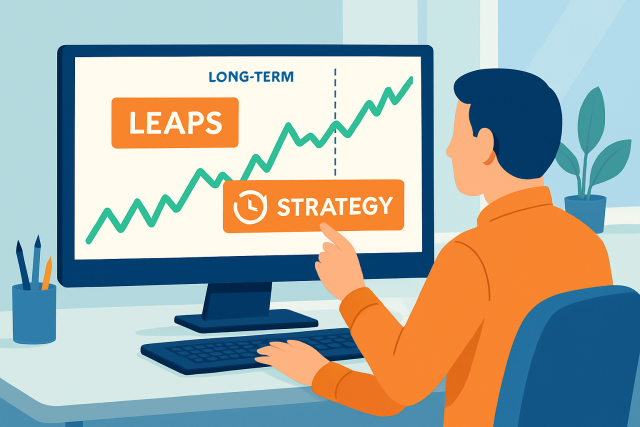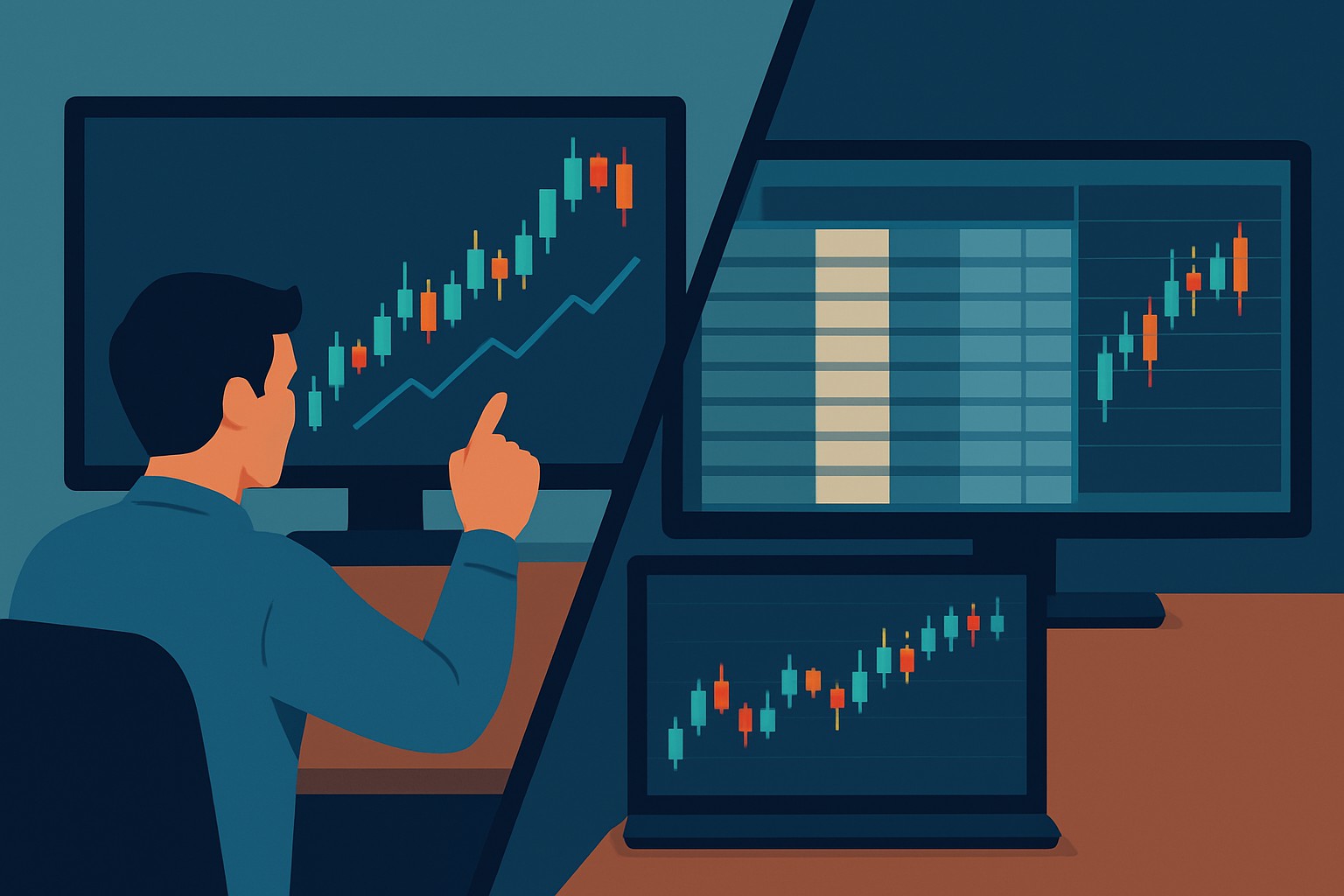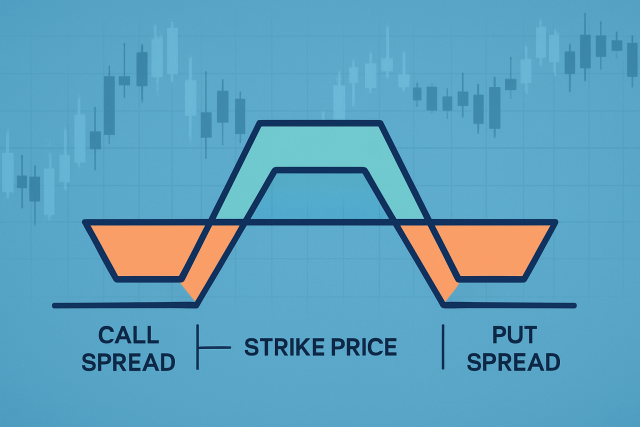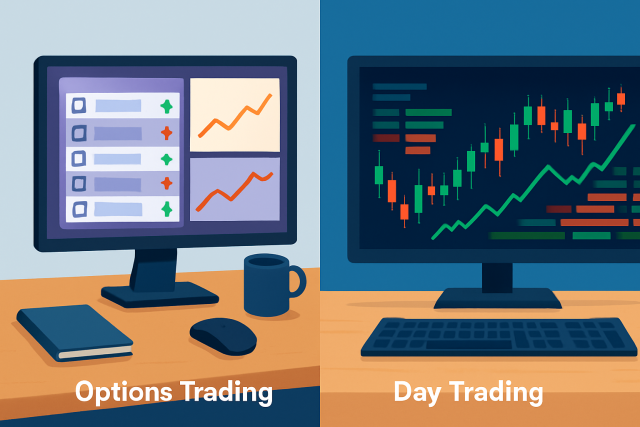
How Leaps Options Trading Differs from Regular Options Trading
LEAPS options provide a longer-term, less stressful way to trade options compared to regular short-t...

Day trading and options trading are some of the go-to strategies in the world of active investing. Day trading often means jumping in and out of positions within the same day. Options trading revolves around contracts that give you the right to buy or sell assets at predetermined prices, adding a bit of leverage and a few extra strategic layers to the mix.
Day trading is all about buying and selling financial instruments within the same trading day to cash in on quick short-term price moves. Day traders typically dive into highly liquid markets and depend on technical analysis and careful risk management to ride the daily price swings.
Options trading revolves around contracts that give traders the chance to buy or sell an underlying asset at a fixed price before the contract runs out, without any obligation to follow through. These options bring both leverage and flexibility to the table, offering a smorgasbord of strategies ranging from simple directional plays to more intricate spreads and clever hedging tactics.
Day trading is all about making swift moves—think trades that last just minutes or hours squeezed into those bustling market hours. Options trading plays a different tune. It stretches across a broader timeline often spanning days or even months and offers a toolkit full of strategies with more wiggle room on how long you hold your positions.
| Feature | Day Trading | Options Trading |
|---|---|---|
| Typical Trade Duration | Typically wraps up within seconds to a few hours, all in the same day — no overnight surprises here | Trades might hang around for days or even stretch into several months, lasting until the option reaches its expiry date |
| Market Activity | Usually bustling only during regular market hours, when the action’s hot and heavy | You can dive in even during those extended market sessions, giving you a bit more room to breathe |
| Execution Speed | Calls for lightning-fast decisions—blink and you might miss it | Speed varies; trades come less frequently, so there’s a bit more time to think things through |
| Position Management | Generally, positions get wrapped up by the day’s end—no carryovers lurking overnight | Positions might stick around longer or be closed early, all depending on your game plan |
| Flexibility | Zeroes in on straightforward price moves, keeping things simple and direct | Opens the door to more complex strategies and the chance to use leverage—it's not just a one-trick pony |
Risk management looks different depending on the approach you take. In day trading, people often stick to tight stop losses to keep things in check. Options bring their own challenges like the ticking clock of expiration and wild swings caused by fluctuating leverage. Usually, day trading aims for smaller and steadier gains—nothing flashy—while options can deliver much bigger payoffs but you have to remember there is always a chance you could lose the entire premium.
Day trading calls for a knack in reading charts and quick technical analysis plus serious emotional control to keep your cool when the market throws a curveball. Options trading usually requires a deeper dive into derivatives and options Greeks along with intricate strategies that can test even the most seasoned traders.
Capital requirements can vary quite a bit depending on the strategy you choose. Day trading calls for enough funds to meet pattern day trading rules and keep up with frequent commissions that add up faster than you might expect. Options trading often demands less up-front capital but comes with its own headaches like the risk of assignment and margin calls that can sneak up on you.
| Factor | Day Trading | Options Trading |
|---|---|---|
| Minimum Account Funding | Typically about $25,000 to steer clear of those pesky pattern day trading rules | It really depends on your broker; some let you dive in with less cash |
| Fees Per Trade | Commissions vary, and trust me, those costs can sneak up when you’re trading all the time | You’ll be looking at premiums plus commissions, which can add up too |
| Margin Requirements | Usually pretty steep for margin accounts, especially if you are dancing around PDT rules | Margin varies depending on your strategy and often requires less upfront dough |
| Pattern Day Trading Rules | Yep, these apply and can cramp your style if your account’s under $25,000 | Generally no PDT restrictions here, but you’ll need the green light from your broker |
| Cost Efficiency | Can get pricey quickly thanks to the sheer volume of trades involved | Often more cost-effective since you can use smaller amounts of capital more wisely |
Tools and platforms play a key role for both day traders and options traders each needing features tailored to their unique style. Day traders usually thrive on fast high-liquidity venues like Binance and Coinbase especially when dealing with crypto assets. These platforms deliver real-time order execution and a deep dive into market depth that’s hard to beat. Options traders often lean heavily on advanced charting and analysis tools like TradingView and TrendSpider. These services offer sophisticated technical indicators and clear options Greeks visualization. They also provide nifty pattern recognition that can give traders an edge in strategy building and timing.
Taking a closer look at pricing, key features, user-friendliness, and security really helps shed light on how top trading platforms and analysis tools stack up when catering to traders with different needs.
| Criteria |  |  |  |  |
|---|---|---|---|---|
| Pricing | Spot fees sit at 0.1%, futures come in lower at 0.04%, and deposits? No charges there. | Subscription plans run from $14.95 up to $59.95 per month, so there’s a tier for different budgets. | Monthly plans start at $49.99 and go up to $129.99 — not cheap, but packed with features. | Transaction fees around 1.49%, crypto conversion at 2%, and depositing your funds won’t cost a dime. |
| Key Features | High liquidity, competitive fees, and a wide buffet of trading options including futures and margin – they’ve got you covered. | Packed with advanced charting, a wide range of technical indicators, plus brokerage integration — a real toolkit for serious charts lovers. | AI-driven pattern recognition, dynamic alerts, backtesting, plus advanced automation features — kind of like having a smart assistant. | Known for ease of use, strong security measures, a wide crypto selection, plus instant buys — perfect for jumping in quickly. |
| Ease of Use | Mostly user-friendly whether you are a newbie or a seasoned trader, though some features can feel like a bit of a maze. | Beginners might feel like they hit a steep hill at first, but once you get the hang of it, it’s a powerhouse. | The interface is friendly enough, yet the tech-heavy tools might feel a bit daunting if you’re just starting out. | Very intuitive, especially if you’re just getting started, with a clean and simple interface that won’t overwhelm. |
| Target Audience | Active crypto traders hunting for a smorgasbord of trading instruments. | Tailored for traders who love diving deep into technical analysis and enjoy sharing ideas with others. | Ideal for active traders who crave automated technical analysis at their fingertips. | Built for novice to intermediate crypto investors and users all over the globe. |
| Trading Options | Spot, futures, and margin trading across a sprawling selection of cryptocurrencies. | Mostly focused on charting and social networking; actual trading happens through linked brokerages. | Offers automated charting and alerts, but you won’t be placing trades directly here. | Covers spot trading, wallet services, and more advanced trading via Coinbase Pro. |
| Security and Reliability | They have had their brushes with security issues in the past; while security is strong nowadays, a few trust jitters can linger. | Solid and dependable platform that doesn’t handle your assets directly, so less worry about custody. | A trusted platform with solid uptime, though it doesn’t take direct control of assets. | Boasts robust security and carries a solid reputation across the industry. |
| Community and Collaboration | Social or collaborative features are a bit on the sparse side here. | Strong community vibe with plenty of social features and idea sharing going on. | Social and community features are rather limited, so don’t expect much chitchat. | Social and collaboration tools are kept to a minimum here. |
| Customer Support | Support options exist but can be slow to respond when you really need them. | Basic support is there, though some users have noticed things can slow down a bit. | Support is available, but the pricing might make casual users think twice. | Support is on hand, though it has a bit of a reputation for being slow. |
| Go to Binance Website | Go to TradingView Website | Go to TrendSpider Website | Go to Coinbase Website |




Binance and Coinbase mainly specialize in cryptocurrency trading and are the go-to choice for day traders who rely on high liquidity and low fees to stay ahead. On the flip side, TradingView and TrendSpider shine with their deep-dive charting and technical analysis tools that come in handy for both day traders and options traders alike.
Deciding between day trading and options trading really boils down to the trader's personality and the capital they have on hand. It also depends on how much risk they are comfortable taking and the amount of time they can dedicate. Day trading tends to click with those who thrive in fast-paced environments and have shorter attention spans. They do not get twitchy after a while, can spend many hours glued to the screen during market hours, and are okay with swallowing quick losses without losing their cool. Options trading usually appeals to individuals looking for more strategic depth who appreciate flexibility on how long they keep their investments. They prefer a more measured, steady approach to risk and often start with a modest chunk of capital.
Day trading and options trading each bring something different to the table and cater to different types of traders. Day trading really shines when you’re quick on your feet and can capitalize on immediate market moves. It is perfect for those who have the time and mindset to keep up with a fast-paced rhythm. Options trading offers clever perks like leverage and flexible strategies and a tighter grip on risk. However, it demands a fair bit of time for learning and planning.
Struggling to improve your trading performance? Edgewonk's advanced analytics tools are designed to give you the edge you need.
With detailed trade journaling, robust strategy analysis, and psychological insights, you'll gain a comprehensive understanding of your strengths and weaknesses. Don't miss out on this game-changing opportunity.
Traders, it's time to elevate your game. Edgewonk is the ultimate trading journal software designed to empower you with data-driven insights and personalized strategies. Take control of your trading journey and maximize your potential.
23 posts written
Driven by a passion for uncovering the hidden patterns that underlie market dynamics, Isla Wyndham brings a unique perspective to the realm of trading, blending quantitative analysis with a keen intuition for human behavior.
Read Articles
LEAPS options provide a longer-term, less stressful way to trade options compared to regular short-t...

Discover the iron condor option trading strategy—a flexible approach for steady income and controlle...

Discover the key differences between options trading and day trading. This in-depth analysis helps t...

Discover practical strategies for using supply and demand zones in options trading. This guide break...
